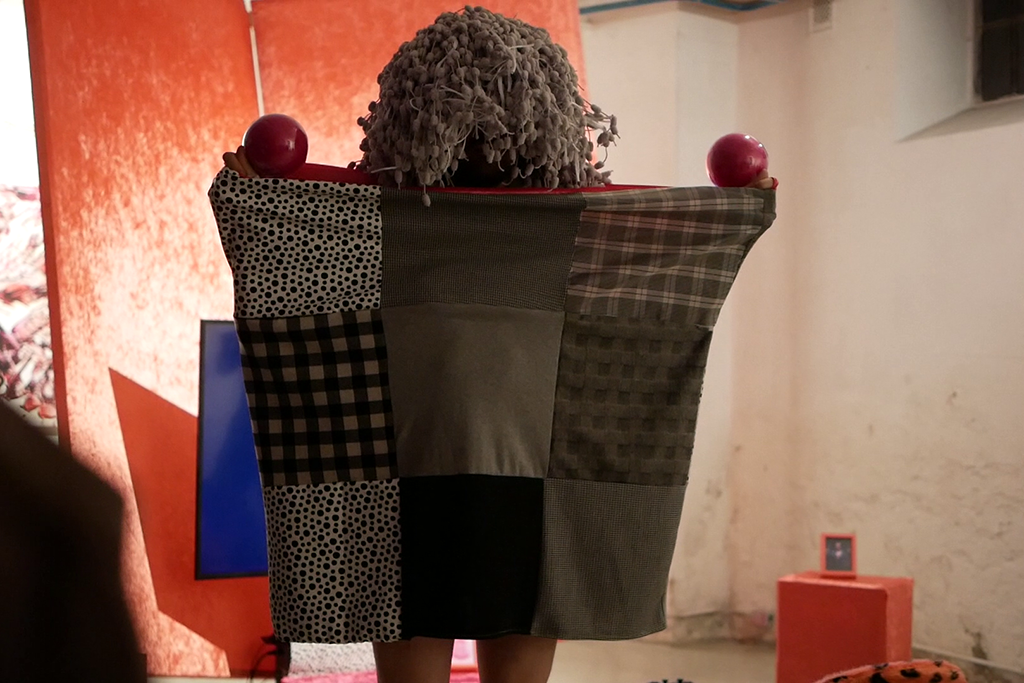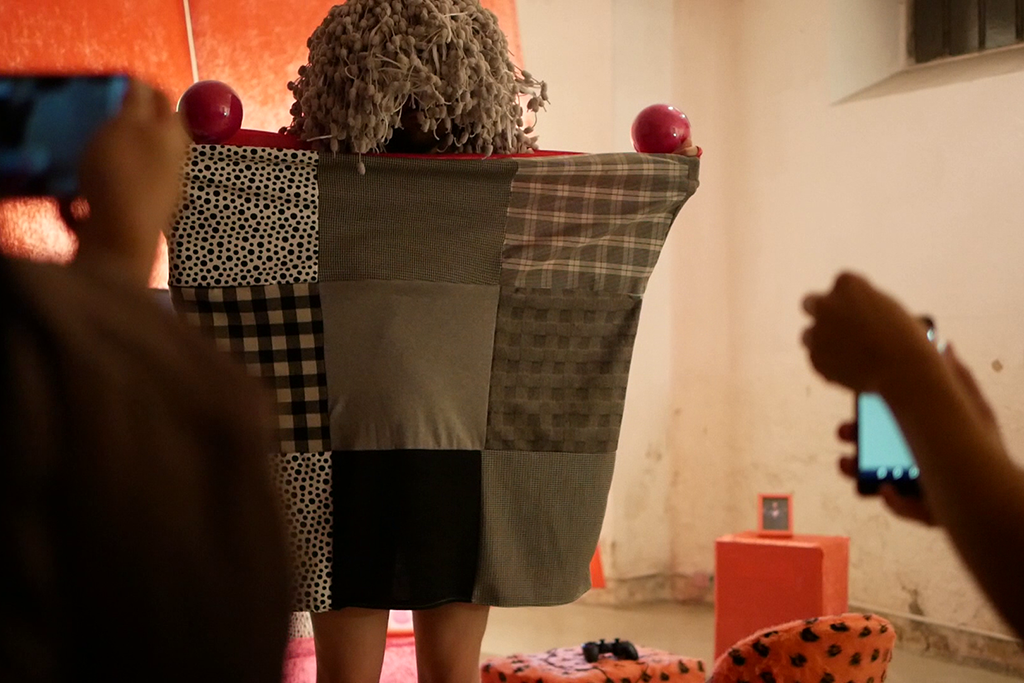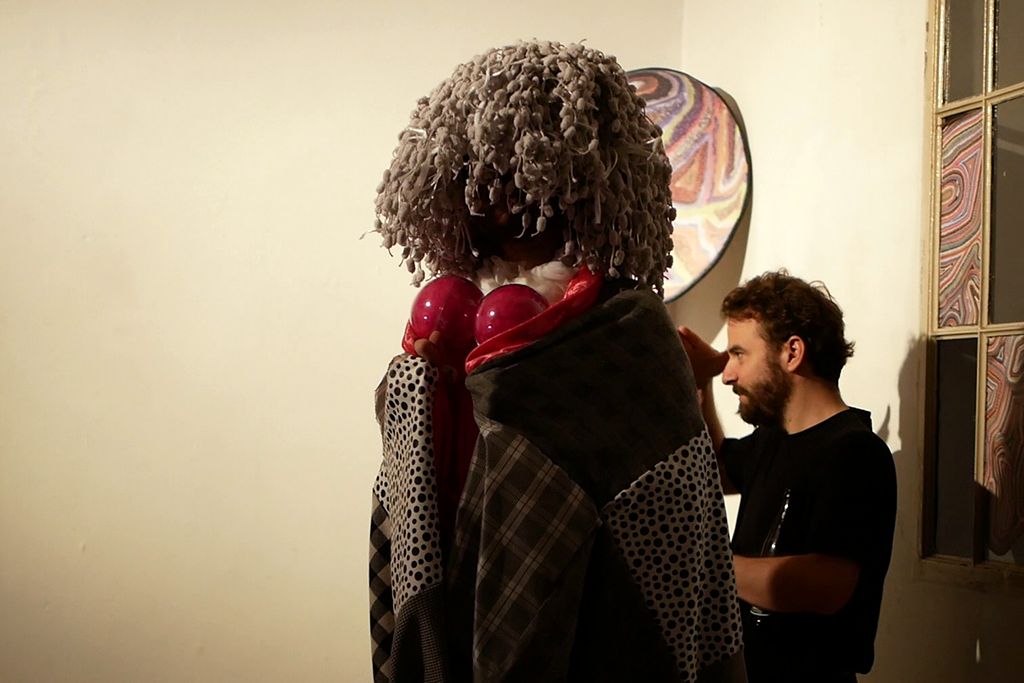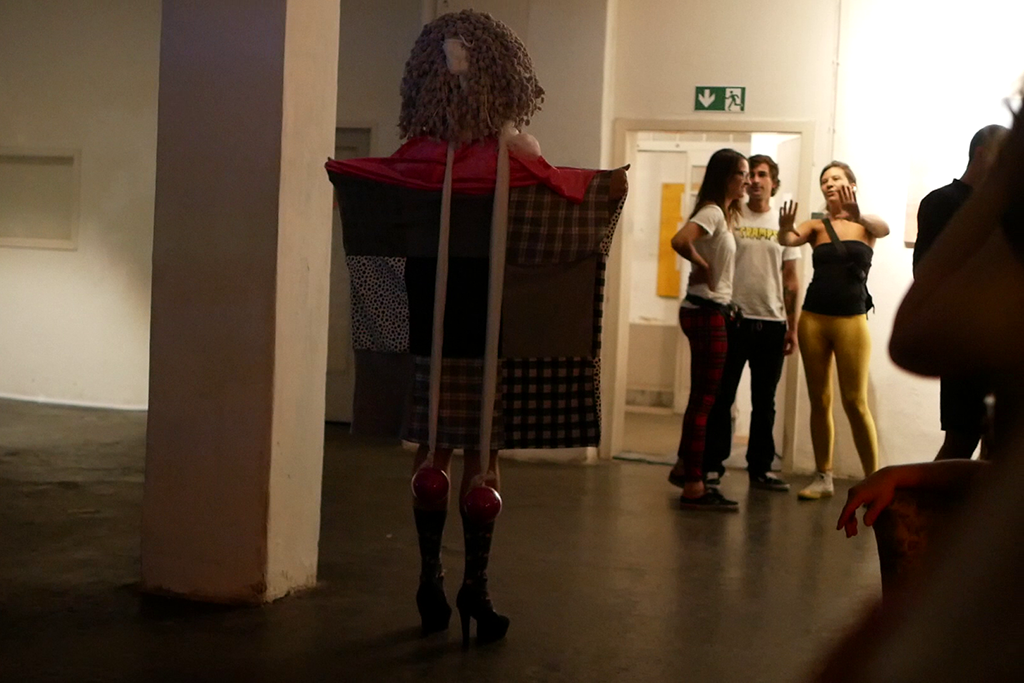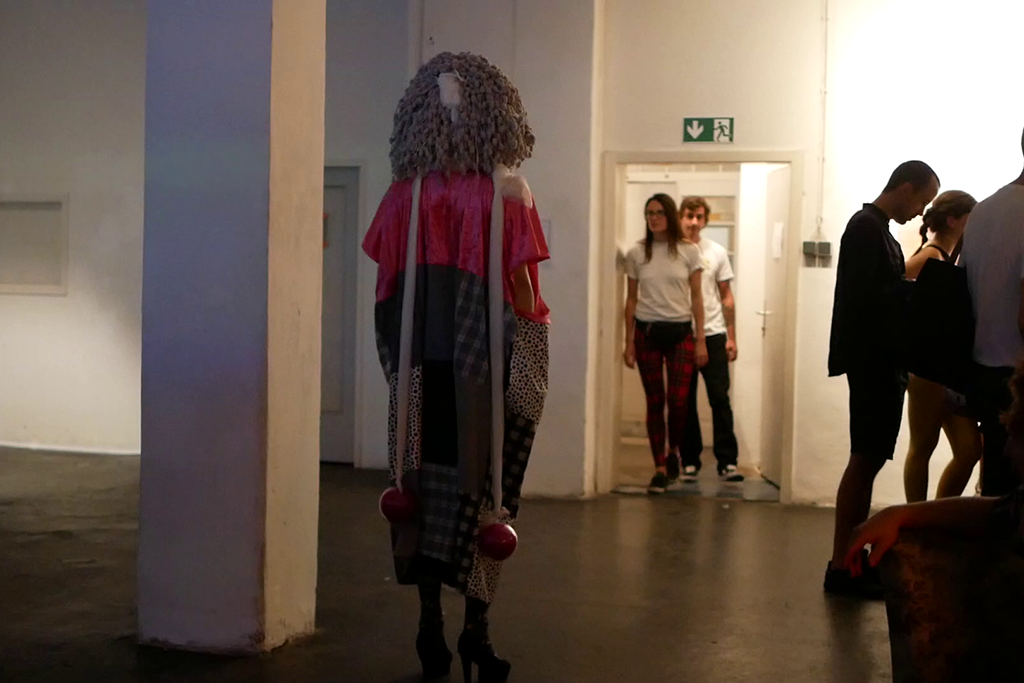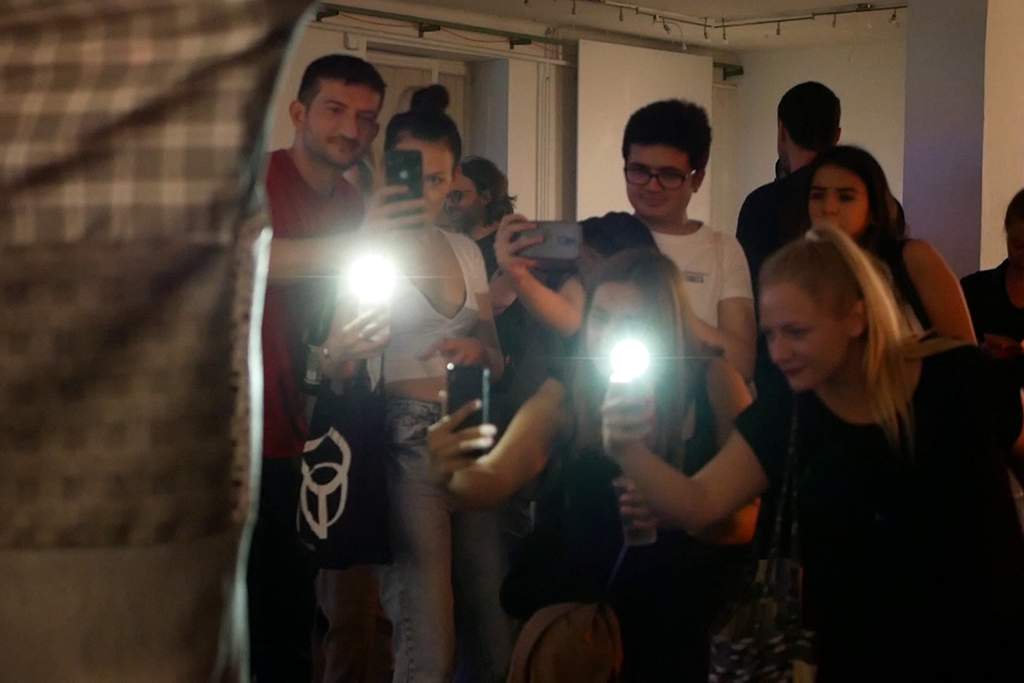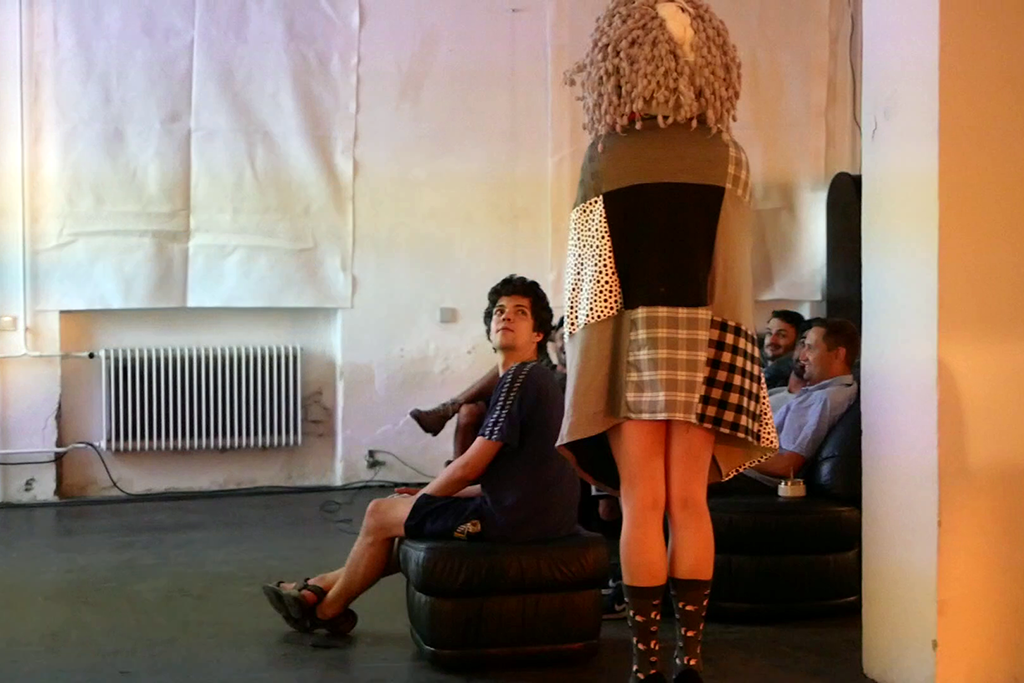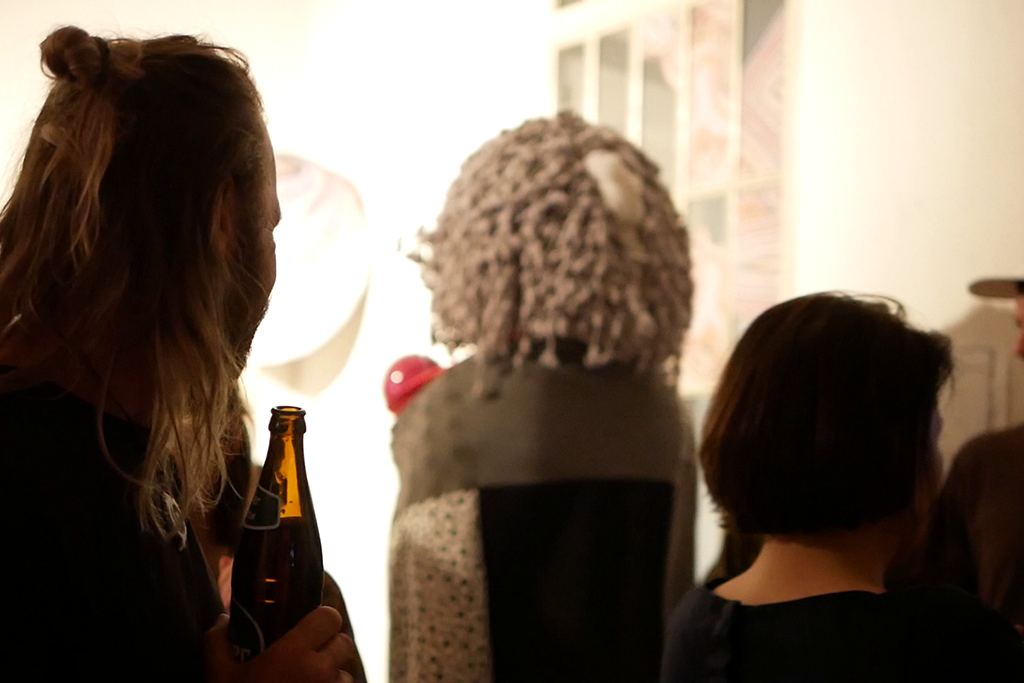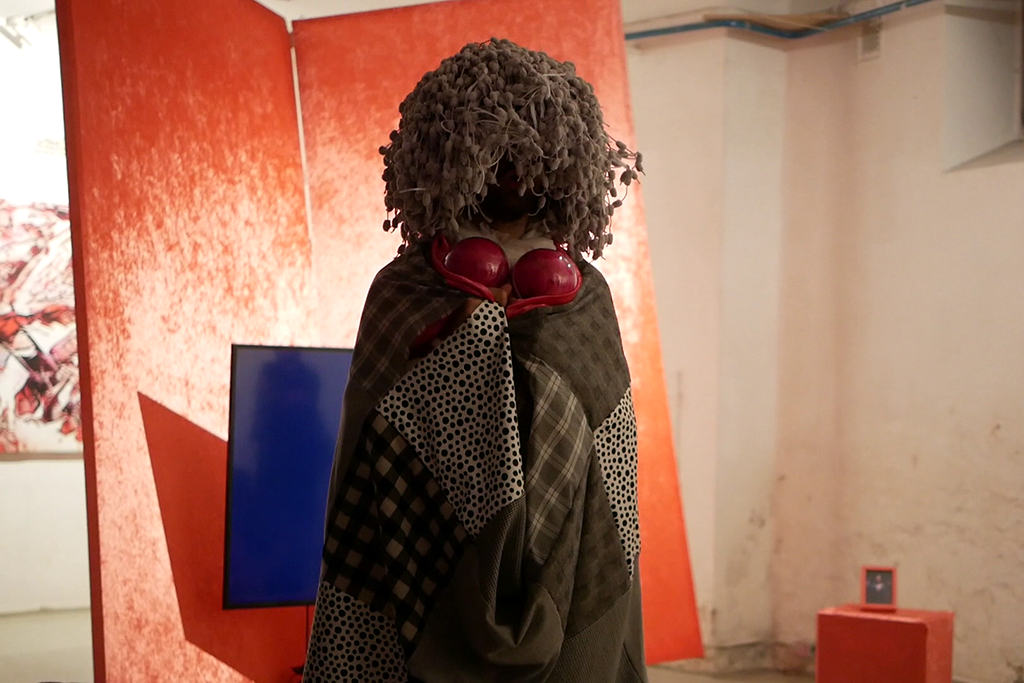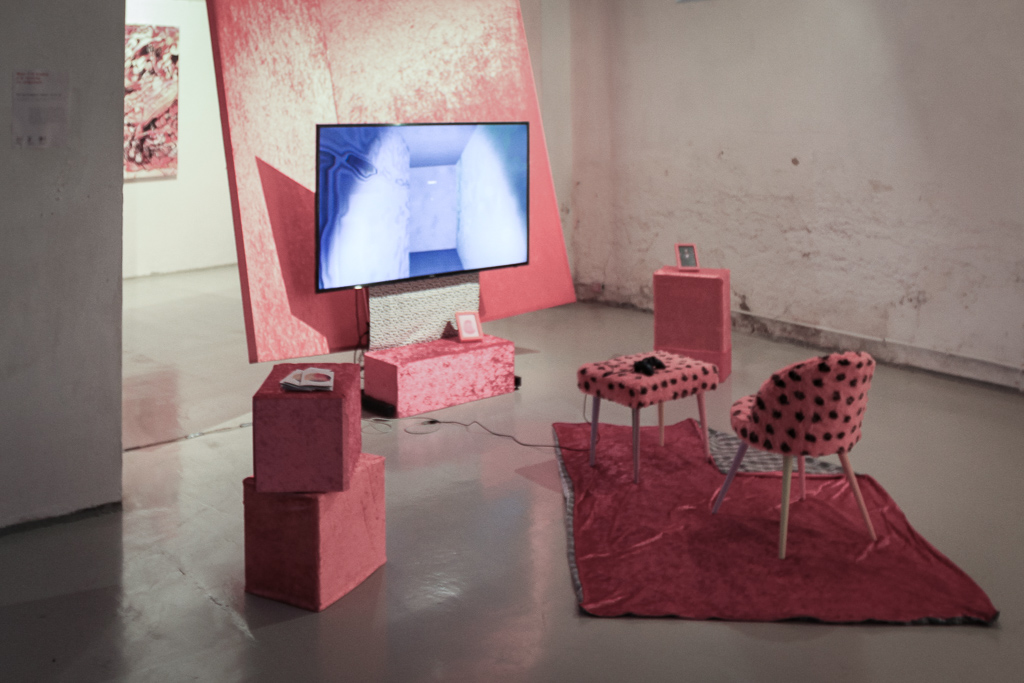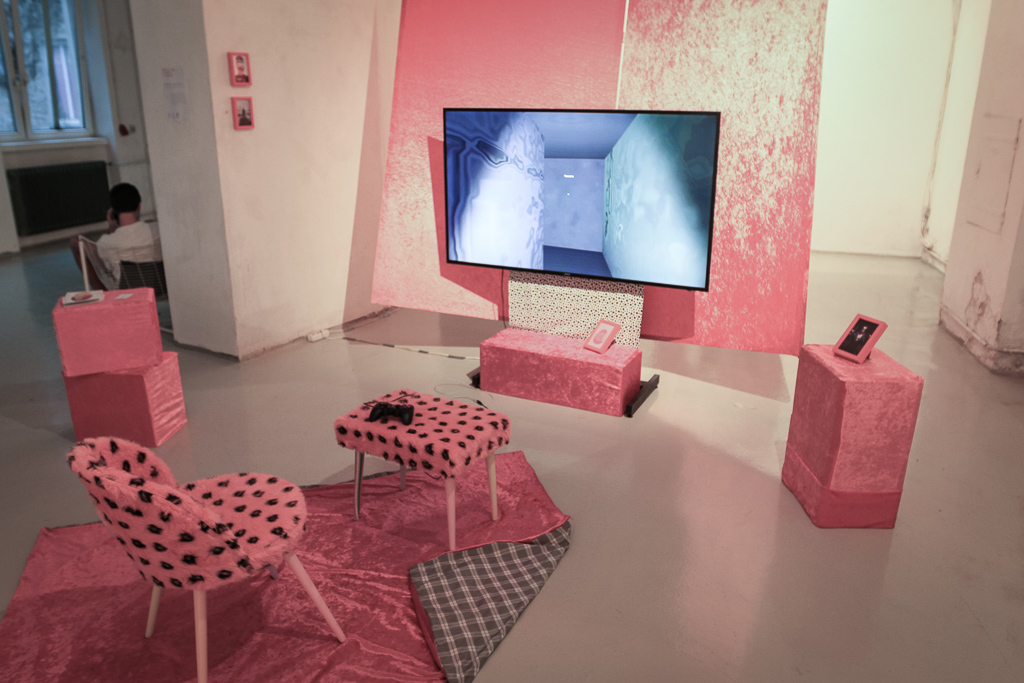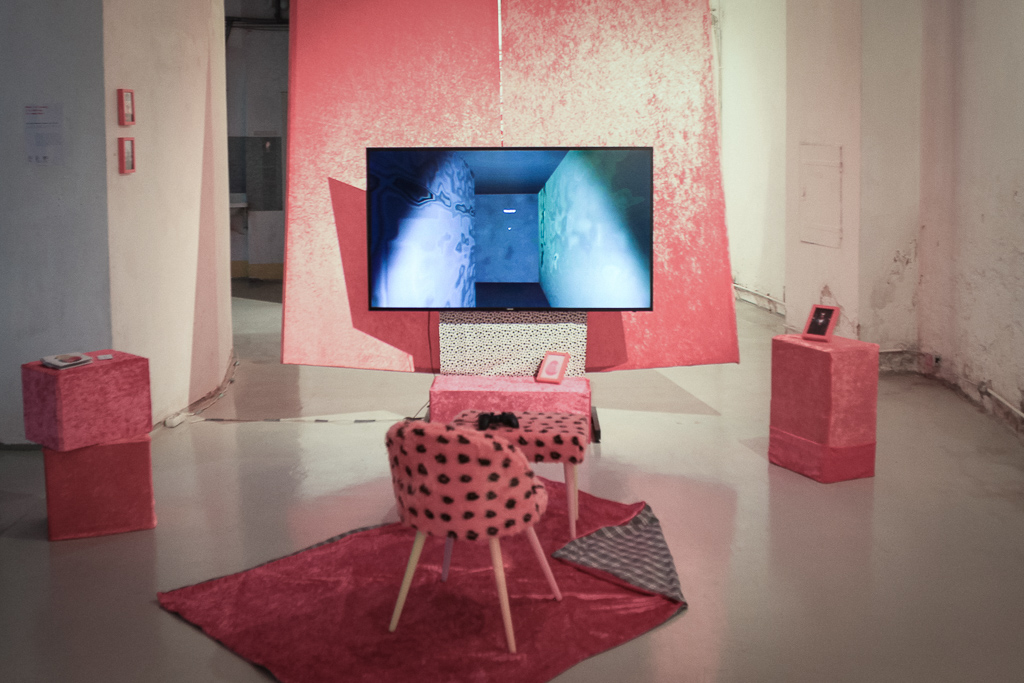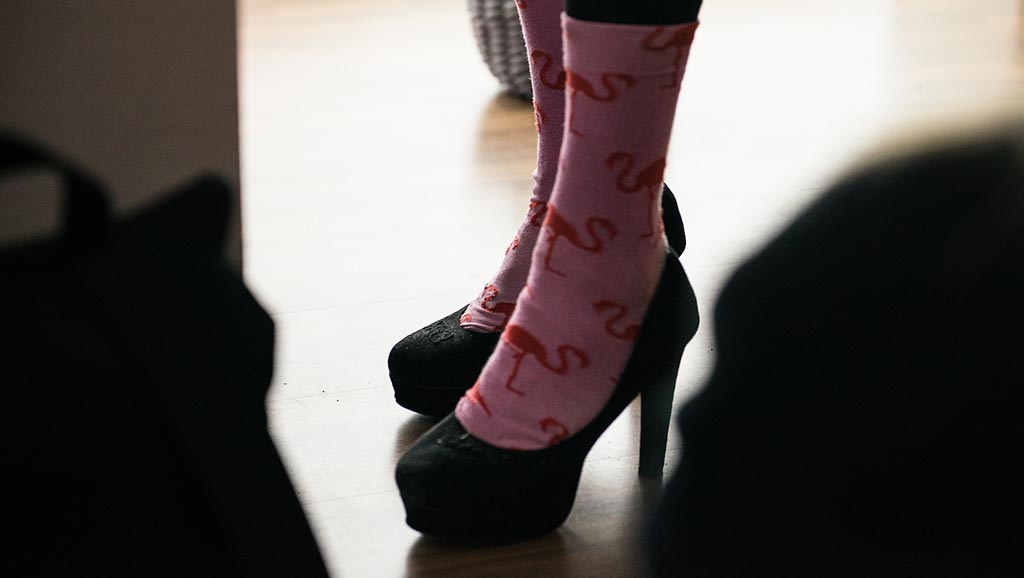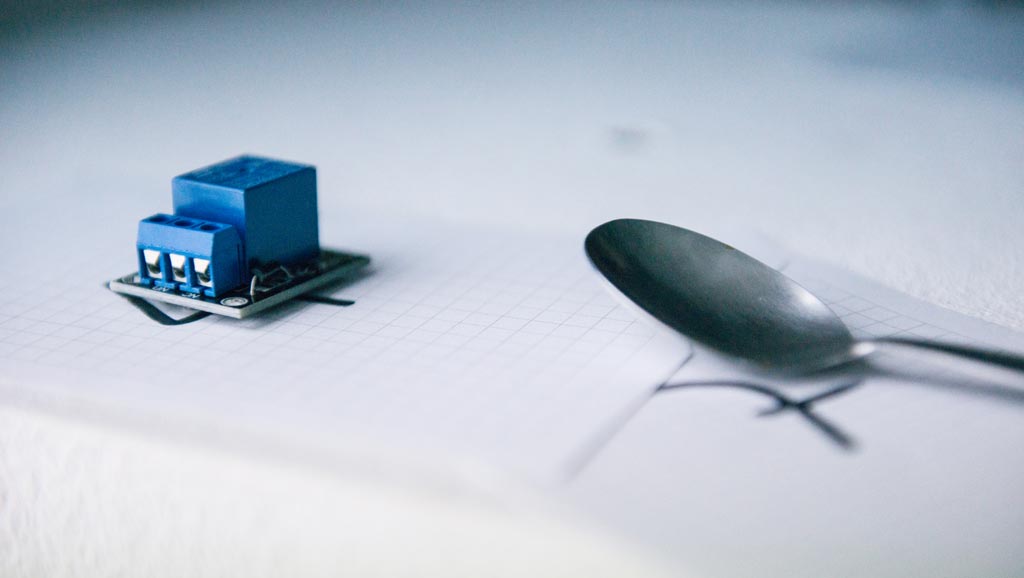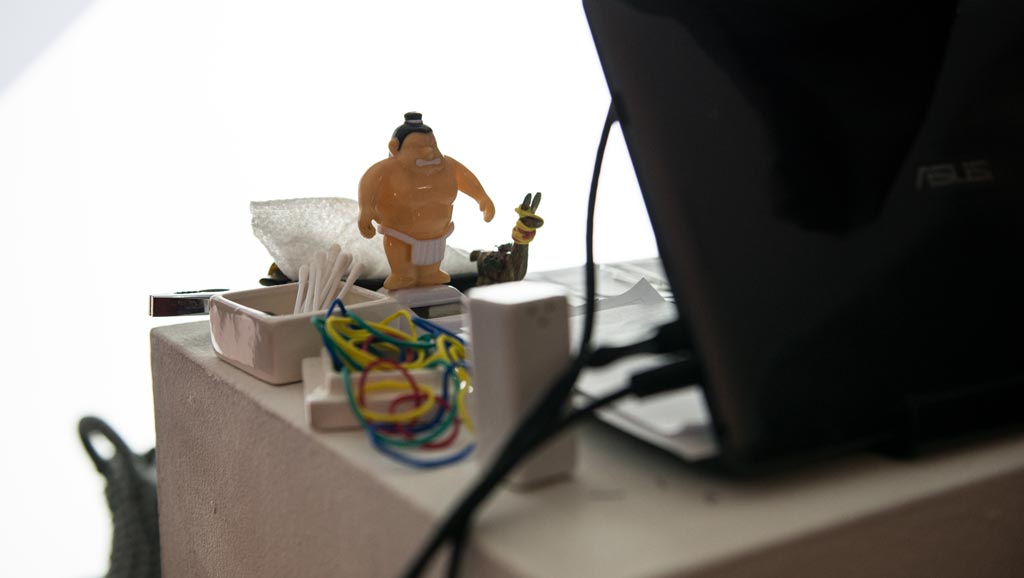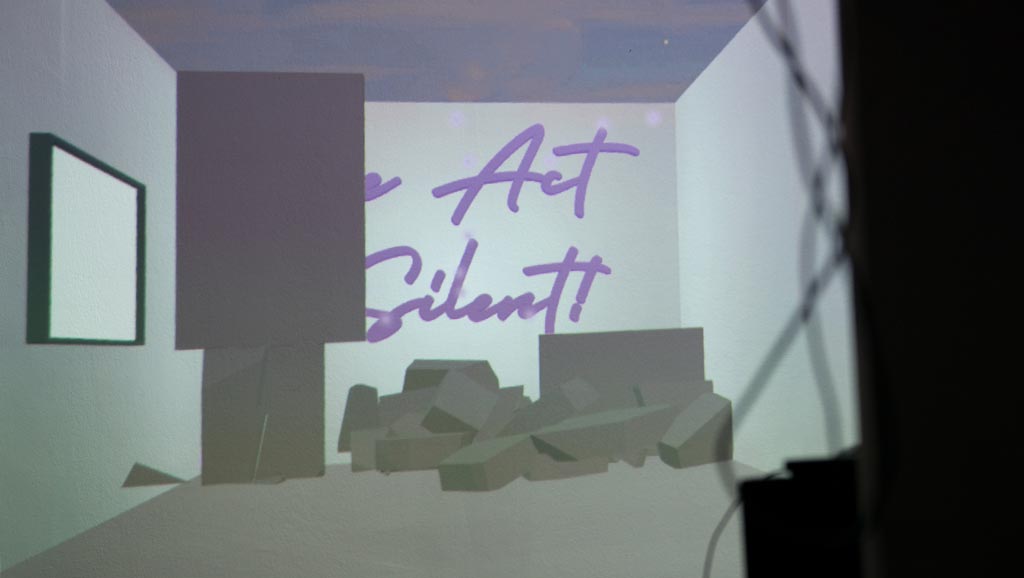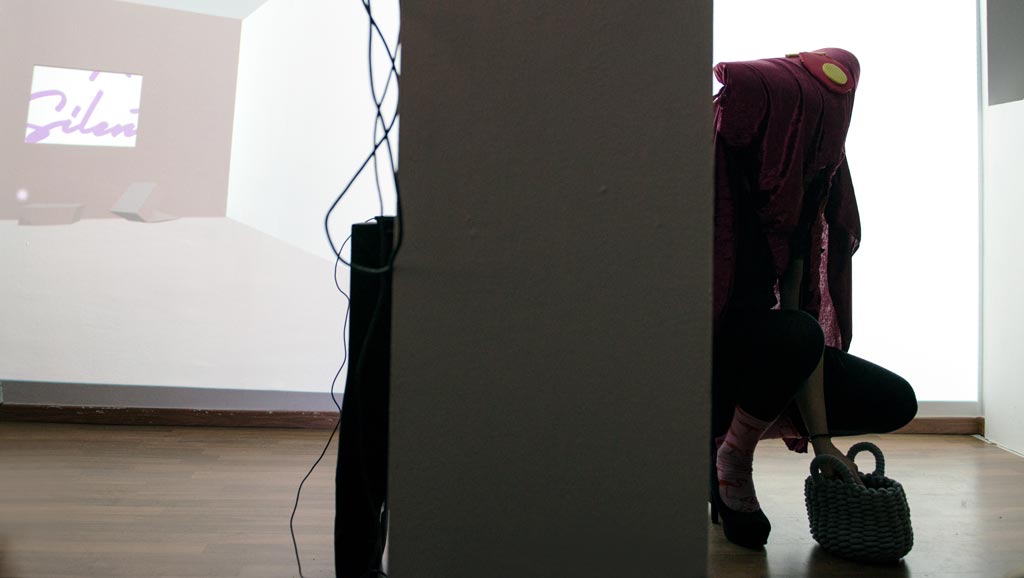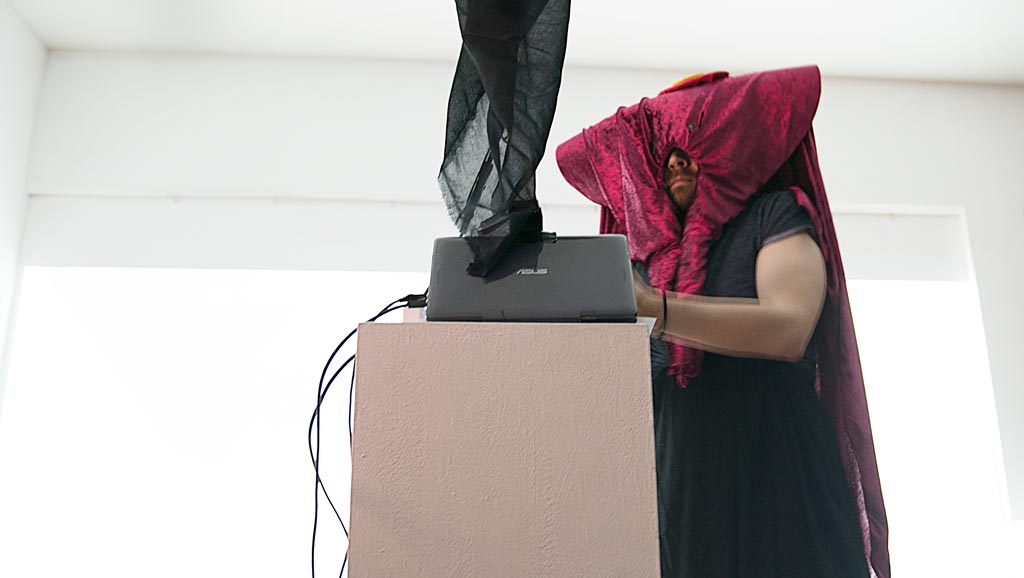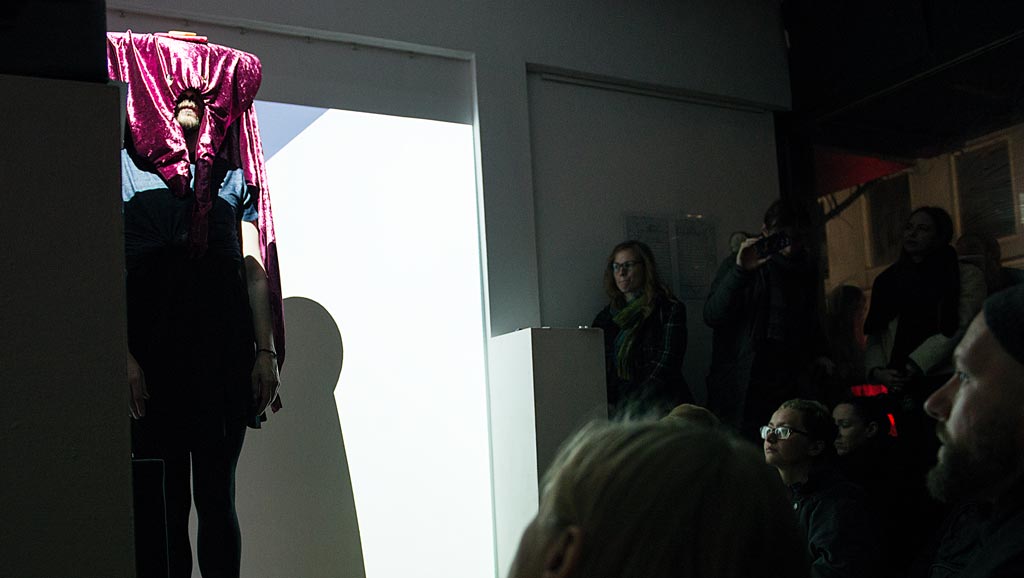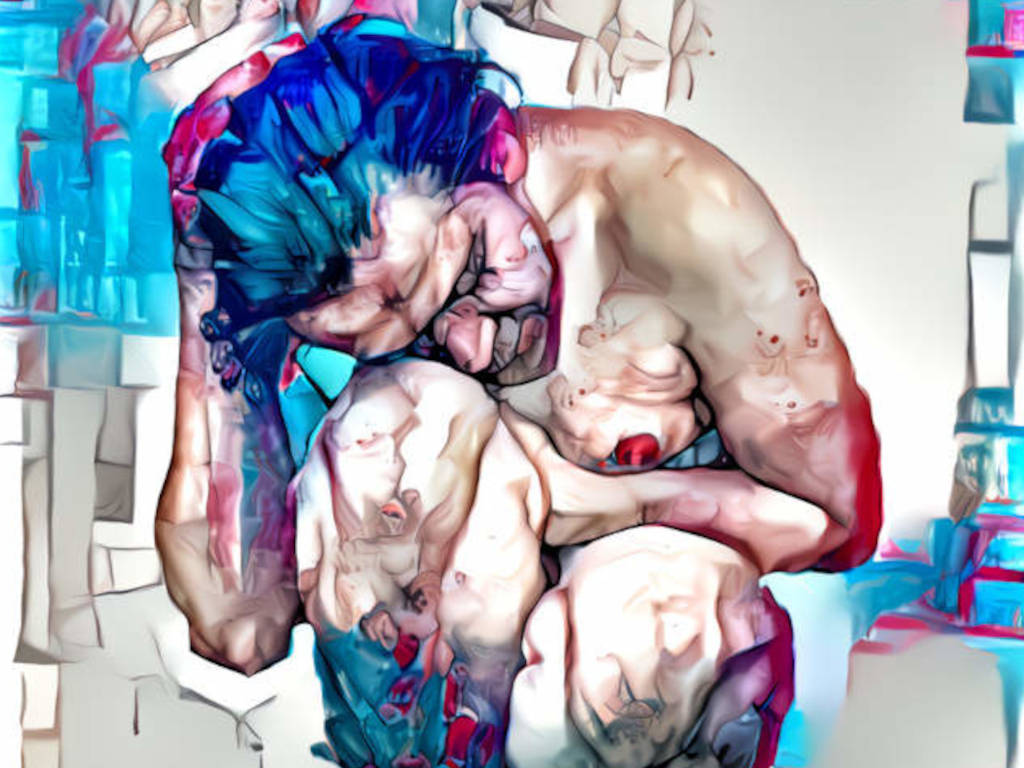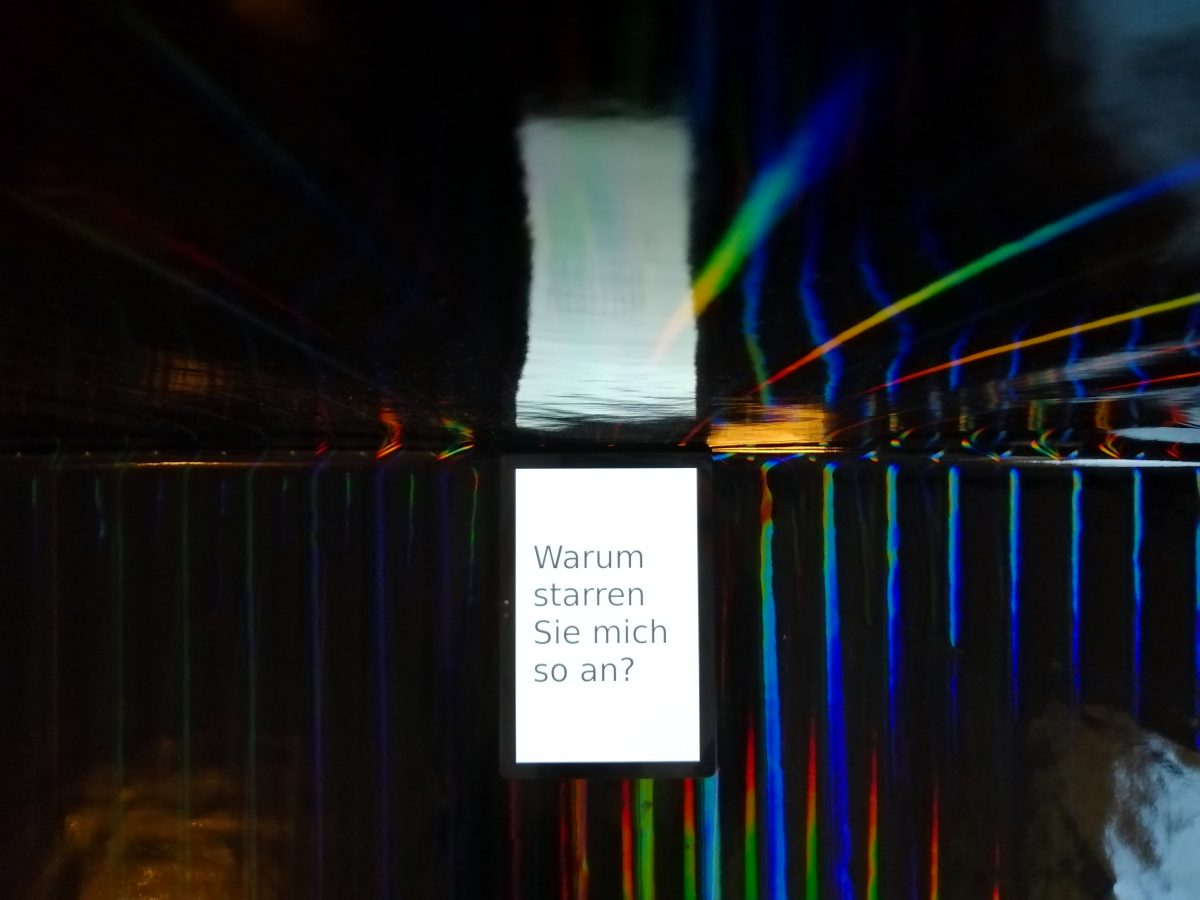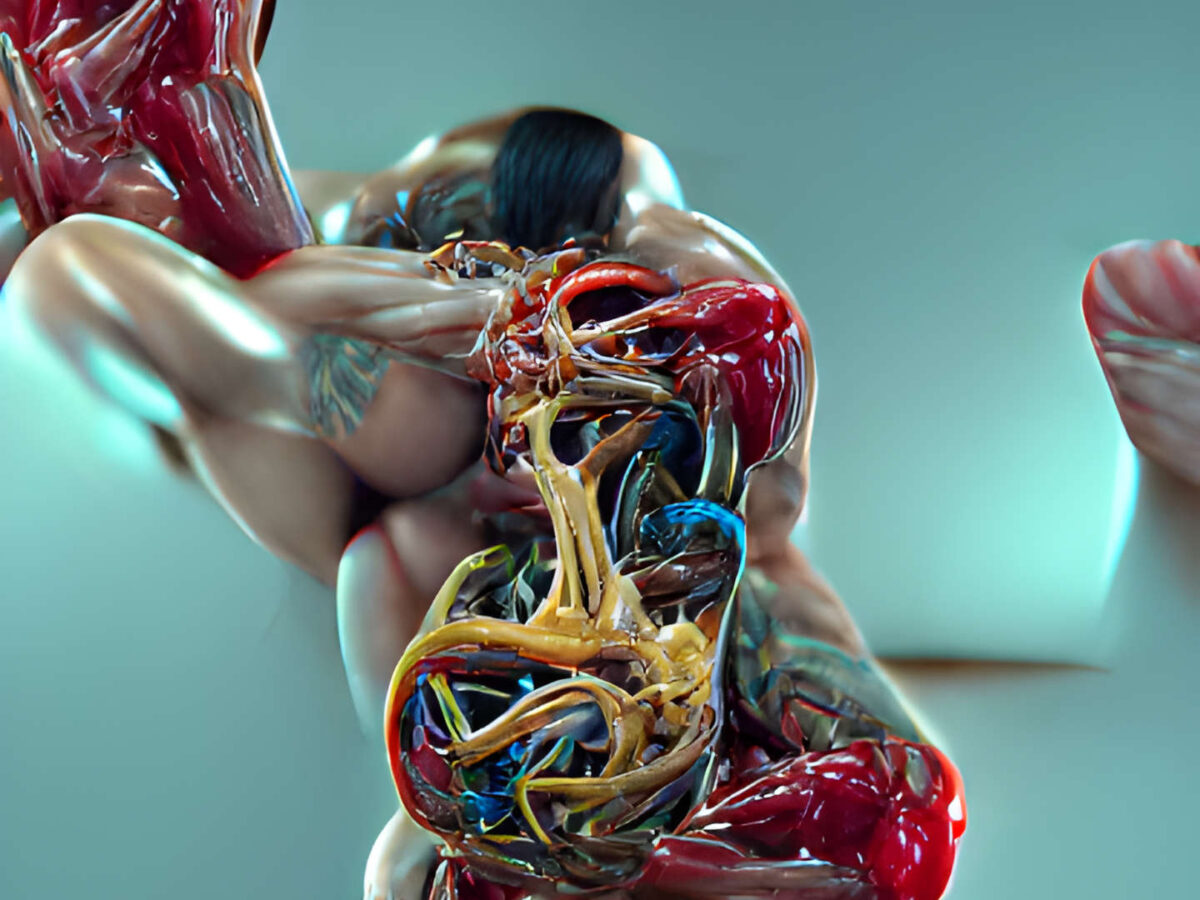Technology can be seen as the epitome of Otherness. It is virtually ubiquitous, it shapes reality and hardly anyone actually knows how it works.
Hidéo SNES
Possible agencies of otherness throughout pure reality and its digital and virtual instances suggest that their identity is not the product but the condition of their distinction. Just as ‘water’ can only be distinguished from ‘ice’ by the condition of aggregation. When I’m binary I’m talking to computers traces and charts the reciprocal yet illusory expulsions between perspectives of complexity and singularity in various instances of reality.
Alien Drag & AR
In the course of the exhibition Expanding the Void 2 of the gallery Dessous, SNES was allowed to implement an augmented reality performance with alien drag in cooperation with the app Artivive. Visitors could scan the body of Hidéo SNES and watch short multimedia videos about technological body regimes. Thereby a unity between the body and its surrounding space could be achieved, whereby the former could be experienced simultaneously via multiple instances of reality.
Are you alone?
In the second installment of the series “When I’m binary, I’m talking to computers.” Hidéo SNES explores in a nostalgic excursion so-called “dungeon crawlers”. Hailing from the 1970s, the dungeon crawler adapts the concepts and rule-sets of fantasy roleplaying titles such as Dungeons & Dragons. Players can venture into gloomy dungeons, fight monsters with magic and collect loot and treasure hidden therein. A central motif is the idea of playing different roles such as the chivalrous knight, the sneaky rogue, or the wise wizard.
When playing a good roleplaying game, there is a transcendent moment in which the players identify with the character they are playing and their personhoods become indistinguishable from that of the game character’s self. This can be seen in declarative statements such as “I died again!” or “I need a monk!”. Or in situations where players get deeply invested in the game character’s story. As deep as reliving it offers, much like a good theater play or movie, a moment of catharsis and the feeling of connectedness.
In her article ‘Who Am We?’, the psychologist Sherry Turkle points out that “as players interact, they become authors not only of text but of themselves, constructing new selves through interaction. […] video-games imply difference, multiplicity, heterogeneity, and fragmentation. Such an experience of identity contradicts the Latin root of the word, idem, meaning ‘the same.’ But this contradiction increasingly defines the conditions of our lives beyond the virtual world. Video-games thus become objects-to-think-with for thinking about postmodern selves.”
As such “Are you alone?” is part of Hidéo SNES’ ongoing project exploring possible agencies of otherness throughout real reality and its digital and virtual instances. It extends the current research by an examination of the formation and regulation of ‘identity’ through play in video-games.
With contributions by Je. Jesch•elet (AT), Lieber Michael (SRB), Neda Nikolic (SRB), Gert Resinger (AT), Vera Sebert (DE), and Anny Wass (AT).
Copy & Paste, a binary reality.
In January 2019 I was invited to develop a performance for Translation of Complexity, a project by Viennese art organization sound:frame. The exhibition addresses intertwined topics and complex narratives through art. Together with improper walls, sound:frame invited a bunch of artists who break down the seemingly ungraspable framework of artificial intelligence, permutation of the internet, and the role of myth and traditions in today’s society.
Hidéo SNES is on to something exciting here. The concept is at its beginning and with the next deep dive, they can create eye-popping performances through trashy humorous drag.
Laura Welzenbach, Curator
In collaboration with Einar Sørensen (NO), Chinami Sato (JP), Lieb & Kühn (DE).
